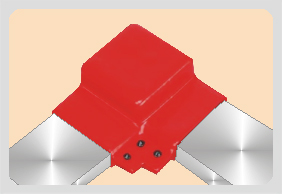
Busbar is an important component used in transmission of power from a point of supply to various other output circuits. Its applications range from transmitting current to every floor of a high rise to being used within a distribution panel or substation or any industrial process. Large loads of current can be easily carried or distributed to several devices through the busbar and therefore selecting an appropriate kind is of paramount importance.
A few other important components along with the busbar are the busbar connection shrouds, bus bar heat shrink sleeve, bus bar bootsand so on. The busbar connection shroud is used for coating the metal conductor or other conductors so as to reduce or halt the flow of electrical current when required and prevent the incidence of shocks, fire or short circuit.
While designing the busbar system several factors have to be addressed such as rise in temperature due to energy losses, short-circuit current stresses and safeguards, methods of jointing and performance and lastly maintenance. As for the features of the material used for the busbar, it should be capable of giving a long and consistent service at lowest costs throughout its lifetime. Some of the required properties of the material include low thermal and electrical resistance, great mechanical strengths in times of compression, tension and shear, great endurance to fatigue failure, fabrication ease, corrosion resistance, competitive first cost and better final recovery value. Normally, therefore the material used for busbar is copper or aluminum and sometimes cuponal.
Copper tops the choice due to its high conductivity and greater strength however, it proves disadvantageous at higher density due to its higher weight. But the superior hardness of copper in comparison to aluminum offers better resistance to mechanical breakage during installation as well as in service. Lesser problems arise in clamped joints of copper bars and higher elasticity modulus of copper offers superior beam stiffness as against an aluminum conductor.
Several intrinsic corrosion and jointing problems arise in the use of aluminum busbar. This is because the switch contacts and terminals are normally made of copper or an alloy of copper and contact between two dissimilar metals raise problematic issues. The fundamental cause of the problem in this context is the formation of a hard insulating aluminum oxide film on an aluminum surface that remains exposed. On the other hand the film of copper oxide that is developed on the copper surface is conductive and this is an added factor that makes copper a preferred material for busbars.
Similar to all electrical circuits, busbars too require protection against the impact of short circuit currents. At such times the support materials and their temperature resistance becomes a significant factor. Busbar connection shrouds play an important role here. Produced from top quality cross-linked polyolefin substance they offer effective electrical insulation and help to endure the high operating temperature on a continuous basis.
However, always remember to get your busbar and related material requirements fulfilled from a reputed manufacturer if you want to ensure their long operating life.